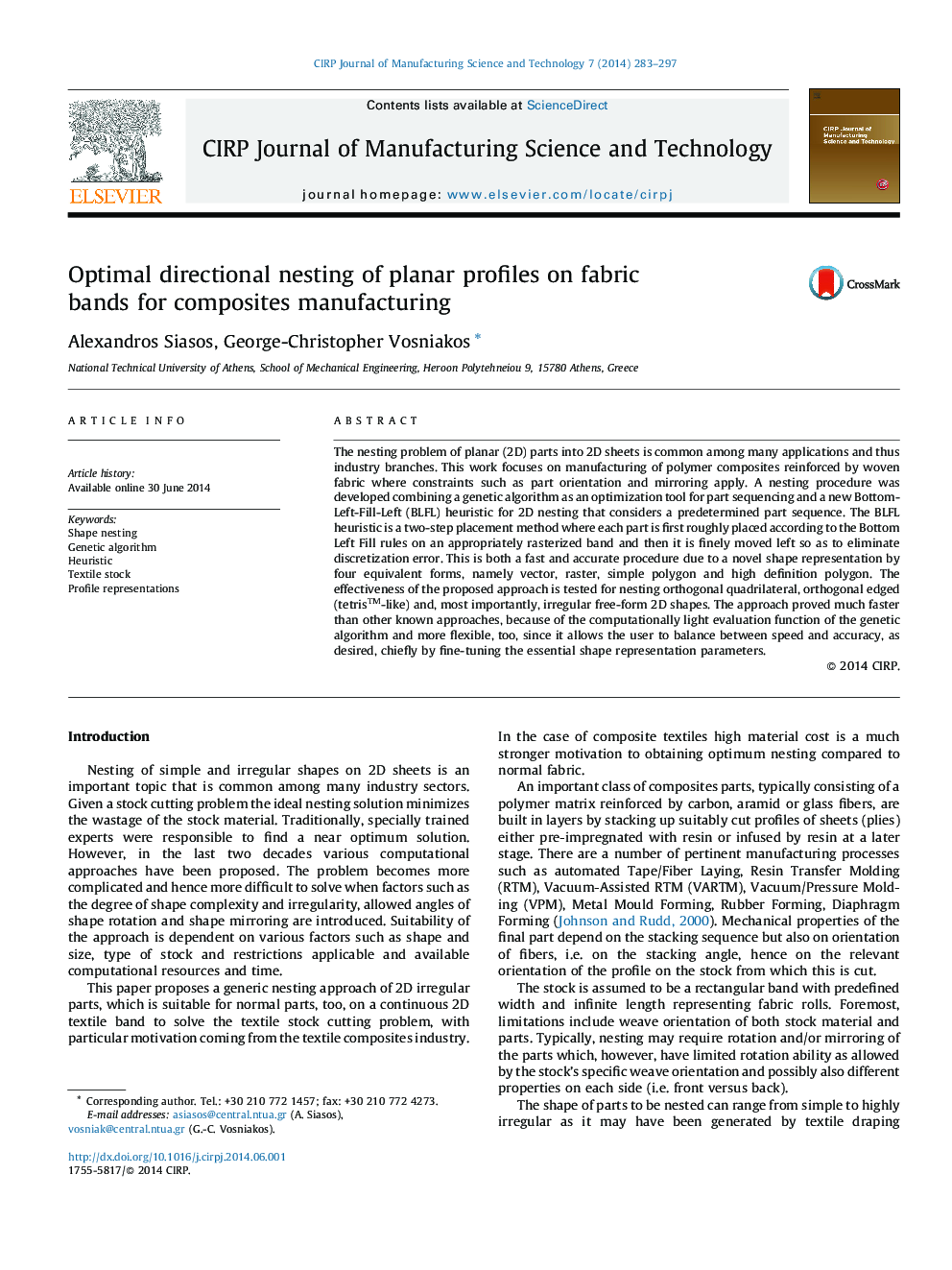| کد مقاله | کد نشریه | سال انتشار | مقاله انگلیسی | نسخه تمام متن |
|---|---|---|---|---|
| 1679556 | 1518429 | 2014 | 15 صفحه PDF | دانلود رایگان |
• Nesting of 2D parts on technical woven fabric bands is solved by genetic algorithm.
• The GA embeds a two-step (rough-place – fine move) Bottom-Left-Fill-Left heuristic.
• Part rotation and mirroring are supported despite expanding the search space.
• The heuristic employs 4 equiv. (from rough to accurate) part representations.
• Part shape representation ensures time, accuracy and profile distance flexibility.
The nesting problem of planar (2D) parts into 2D sheets is common among many applications and thus industry branches. This work focuses on manufacturing of polymer composites reinforced by woven fabric where constraints such as part orientation and mirroring apply. A nesting procedure was developed combining a genetic algorithm as an optimization tool for part sequencing and a new Bottom-Left-Fill-Left (BLFL) heuristic for 2D nesting that considers a predetermined part sequence. The BLFL heuristic is a two-step placement method where each part is first roughly placed according to the Bottom Left Fill rules on an appropriately rasterized band and then it is finely moved left so as to eliminate discretization error. This is both a fast and accurate procedure due to a novel shape representation by four equivalent forms, namely vector, raster, simple polygon and high definition polygon. The effectiveness of the proposed approach is tested for nesting orthogonal quadrilateral, orthogonal edged (tetris™-like) and, most importantly, irregular free-form 2D shapes. The approach proved much faster than other known approaches, because of the computationally light evaluation function of the genetic algorithm and more flexible, too, since it allows the user to balance between speed and accuracy, as desired, chiefly by fine-tuning the essential shape representation parameters.
Journal: CIRP Journal of Manufacturing Science and Technology - Volume 7, Issue 3, 2014, Pages 283–297
